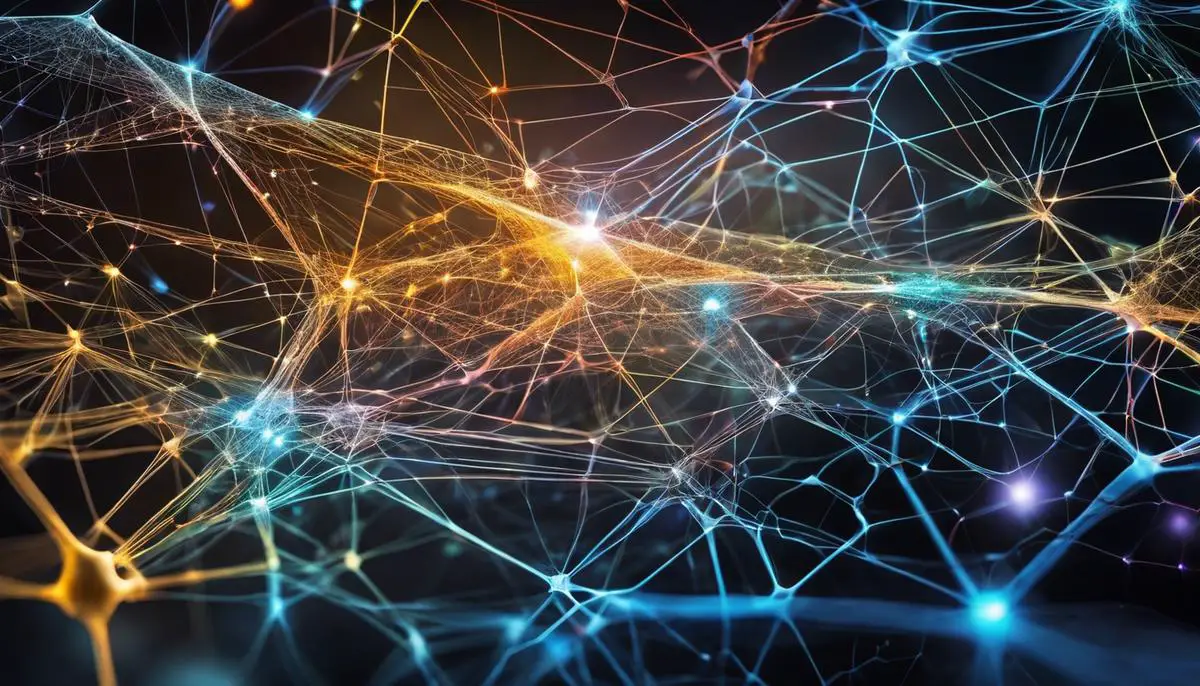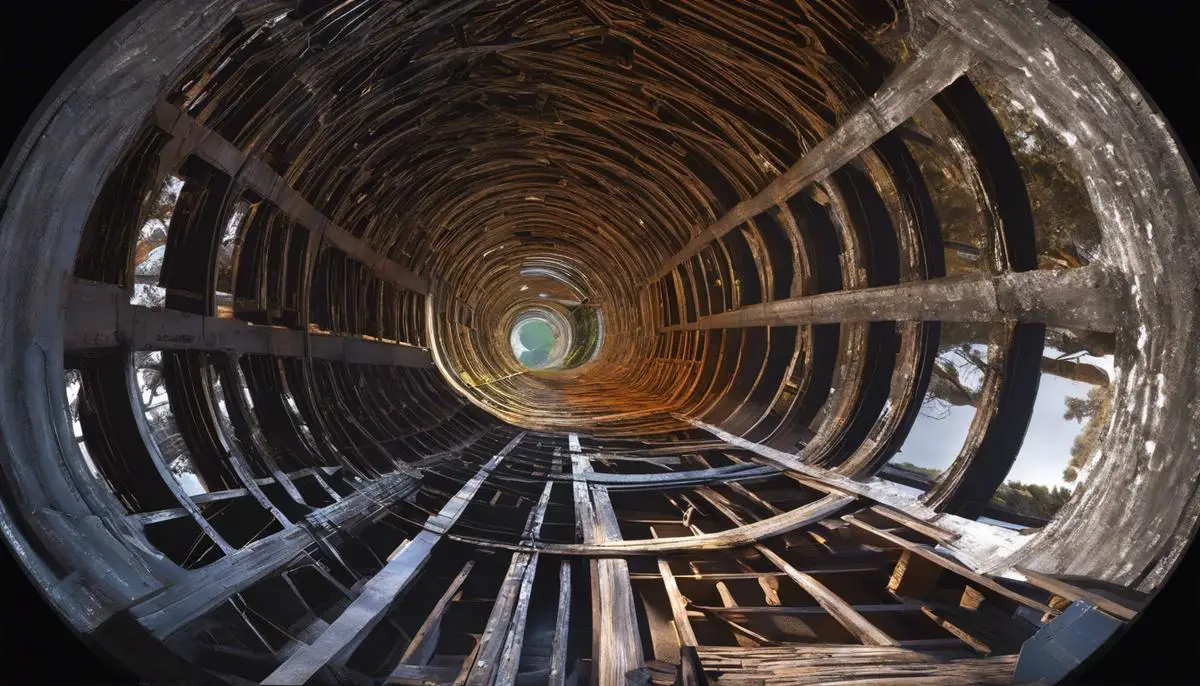In an age where digital technology is rapidly evolving, the domain of image processing capitalizes on deep learning techniques for various applications, including image segmentation and object detection. This work starts from the basics of image processing and deep learning, elucidating on the digital imaging fundamentals and the philosophy underpinning deep learning.
Following this foundation, it delves into specialized topics of convolutional neural networks, unravelling their architecture and significance in extracting features from images. These subjects lead towards the critical aspects of image segmentation, where deep learning has provided groundbreaking tools like FCNs and U-Net.
Lastly, the essay explores the phenomenal deep learning capacities in object detection, illuminating the complex yet efficient architectures like R-CNN, Fast R-CNN, and YOLO. This piece aims to provide an in-depth understanding of deep learning in image processing, enabling professionals to deploy these advanced technologies in relevant fields.
Contents
Fundamentals of Image Processing
As readers delve into the world of image processing, they should remain mindful of the profound complexity and fascination held within this realm of study. Though seemingly ordinary and commonplace in today’s high-tech society, image processing has an underpinning of rigorously developed theory and innovative techniques that have remained captivating for scientists and researchers across generations. Harnessing computational algorithms to enhance, analyze and manipulate images, image processing is indubitably a backbone of contemporary technology.
Image processing, as is the wont of this intellectual realm, grounds itself in key concepts and methodologies. An initial introduction into this field warrants a brief exploration into the core theories and primary techniques that shape this captivating discipline.
At its very elemental level, an image can be defined as a two-dimensional function, f(x,y), where x and y define the spatial coordinates, while the amplitude of f at any (x, y) quantifies the intensity or brightness of the image at that point. Digital images are naturally quantifiable, thus further underpinning their propensity for mathematics-based analysis and manipulation.
One of the fundamental sectors within image processing is Image Enhancement. It seeks to accentuate certain features or remove unwanted noise from images. Techniques such as smoothing filters, sharpening filters, and histogram equalization exist within this field.
Image Restoration, a closely-related field, differs subtly from enhancement in that it aims to restore an image to its original, pristine condition, considering the image degradation as noise. Algorithms such as Wiener Filters or Inverse Filtering are typical techniques applied within this field.
One of the most widely used image processing techniques is Image Segmentation. It refers to partitioning an image into multiple segments to simplify or alter the image representation into something more meaningful. Techniques can be pixel-based, region-based, edge detection, or clustering methods like K-means.
The Morphological Processing technique holds tremendous value for delineating image features. It involves processing an image based on its shape, employing erosion and dilation as fundamental operations.
Image processing is requisite to grapple with Color Image Processing, handling full-color images with techniques such as color models, color transformations, smoothing, and sharpening.
And lastly, at an advanced level, Wavelets and Multiresolution Processing are being increasingly implemented. They enable an image to be represented in varying degrees of resolution, aiding in compression and pyramidal representation.
Image processing, a field of intrigue and mastery, is vast and complex, offering a treasure trove of knowledge. Its core principles and techniques are enshrined within the realms of mathematics, data analysis, and computer science, carving its significant niche within the domains of technology. The array of techniques described above establishes just a glimpse of its complex labyrinth, a testament to its profound standing in the canon of academic and technological research.

Introduction to Deep Learning
The Revolutionary Impact of Deep Learning in Artificial Intelligence
Deep learning, a subclass of machine learning, is well heralded for its significant contributions to the sphere of artificial intelligence (AI). Often conflated with AI, deep learning propels machines to mimic the human brain, enhancing their ability to understand, interpret and respond.
The heart of deep learning lies in the concept of neural networks, particularly deep neural networks (DNNs). DNNs consist of multiple layers of nodes, each simulating a neuron in the human brain. Each layer accepts inputs, applies processing, and passes the result to the subsequent layer. The deep architecture of DNNs forms the basis for their name and their remarkable ability to process vast amounts of data in complex, non-linear ways.
What distinguishes deep learning from traditional machine learning is its surpassing capability in handling high dimensional data. Traditional machine learning methods often struggle with the curse of dimensionality, necessitating manual feature extraction for efficient data processing. In contrast to these, deep learning algorithms can automatically learn hierarchical representations, effortlessly managing high dimensional data. This unique trait allows deep learning to excel in fields like Computer Vision and Natural Language Processing (NLP), where data is abundant and complex.
The transformative power of deep learning in AI is further exemplified in its adeptness at unstructured data processing. Where traditional algorithms stumble, deep learning systems thrive, interpreting data types such as images, text, and sound to perform tasks like speech recognition, language translation, and object detection. Thus, it’s deep learning that endows Siri, Alexa, and Google Translate among other AI technologies with their distinctive capabilities.
Furthermore, deep learning systems can continuously learn, adapt, and improve. They do not merely execute taught commands; their functionality extends to learning from errors, refining their capabilities, and enhancing their performance over time. This feature of continual evolution contributes to the expanding adaptability and application of deep learning, revolutionizing the AI landscape.
One of the crowning achievements of deep learning is the ascendancy of Convolutional Neural Networks (CNNs) in image processing. Leveraging the spatial structure of images, these specialized architectures automate the recognition of complex patterns far beyond the human eye’s reach. Through CNNs, deep learning has significantly expedited advancements in medical imaging, autonomous vehicles, and facial recognition technology to name just a few.
In summation, deep learning emerges as a revolutionary technique in artificial intelligence due to its superior ability to handle high dimensional, unstructured data, its capacity for automatic feature extraction, its continual learning, and its specialized architectures like CNNs. These attributes position deep learning at the forefront of AI research and technology, extending the boundaries of what machines can learn and accomplish. With further advances in computational power and big data, it is expected that the influence of deep learning will only continue to amplify, driving forth a golden era in AI.

Convolutional Neural Networks
Convolutional Neural Networks (CNNs): The Lynchpin of Image Processing
Convolutional Neural Networks (CNNs) occupy a superior position in the realm of image processing. Their vital role is marked not merely by improved computational efficiencies, but, more importantly, by their unique ability to infer nuanced, hierarchical patterns in image data – a defining characteristic harking back to the analogy of vision processing in biological organisms.
A CNN is inspired by the principle of ‘local receptive fields’ in the human visual cortex, wherein neurons respond to stimuli only in a restricted region of the visual field. This affirms the foundational convolutional layer in CNNs. The mathematical operation of convolution allows a neural network to learn hierarchical pattern representations in an image. The convolution operation takes a small ‘image kernel’, and applies it across the entire image, maintaining locality and transition invariance. Further, by adjusting the weights of the image kernel, the CNN can learn specific features from the images, a major stride over traditional image processing methods.
From hierarchies to pooling, the architecture of CNNs is a monumental exemplar of simplicity, sophistication, and efficiency. Pooling or subsampling layers, alternating with convolutional layers ensure that the CNN is scalable to variations in the input image. Max-pooling, a common type of pooling, enables the selection of the strongest features, making the model robust to small translations, rotations, and scalings of the input, modeling the aspect of ‘spatial invariance’ in vision.
The threaded network of convolution and pooling layers leads up to the fully connected layer, a crucial juncture where information distilled from prior layers is integrated. This part in the CNN resembles the traditional Artificial Neural Network, with every node connected to every other node in the preceding layer. Its function is to carry out high-level reasoning on the extracted features and finally produce the output.
Herein, one appreciates a form of ‘learning hierarchy’ – an aesthetic feature of CNNs. In the early convolutional layers, CNNs learn to detect simple features such as edges and colors, progressing towards more complex patterns and objects with each succeeding layer.
In practice, CNNs have demonstrated excellent performances across various tasks in image processing. This includes object detection and recognition, semantic pixel-level labelling, and even generating images. CNNs’ ability to handle multidimensional inputs directly is particularly useful in medical image processing, where they outperform traditional machine learning models in tasks such as disease detection and health prognosis.
In autonomous vehicle technology, CNNs play an integral role by interpreting visual data to understand the surrounding environment. By processing the incoming stream of frame-by-frame data, CNNs enable these vehicles to respond appropriately to objects, obstacles, and traffic signals. In the retail industry, CNNs are used to enhance the shopper experience by recognizing and tracking products, thereby steering a seamless shift towards automated shopping experiences.
In essence, CNNs have indeed reshaped the landscape of image processing. Their inherent ability to process high-dimensional data, resilience to minor changes in input, spatial hierarchies and intuitive learning make them vital to current and future advancements in image processing. These merits, combined with advancing computational power and data abundance, hint at an ever-broadening horizon for deep learning and, by extension, the inescapable role of CNNs in the unfolding narrative of artificial intelligence.

Deep Learning for Image Segmentation
Advancements in the application of deep learning techniques, specifically Convolutional Neural Networks (CNNs), have propelled significant revolutions across sectors related to image segmentation. Harnessing the power of CNNs for image segmentation has endowed experts with enhanced accuracy and heightened efficiency.
CNNs have the capacity to transform an image into a series of multiple layers, separating it into segments, each containing a particular entity. Studies have shown that CNNs exhibit exceptional capabilities in the task of image segmentation compared to traditional algorithms reliant on laborious hand-crafted features. This segmentation process in CNNs operates, crucially, on the basis of features learned automatically during deep learning.
Deeper exploration of CNNs reveals that they uniquely benefit from three fundamental characteristics: local receptive fields, shared weights, and pooling. Through the combination of these properties, CNNs can preprocess segmented images, inducing a substantial reduction in the computational burden, particularly for large-scale, high-dimensional, and intricate image databases.
CNNs employ a particular layer, known as the convolutional layer, which is specialized to handle specific image-based tasks. Operating in a convolved fashion, these layers oversee the extraction and learning of local features of the image, enabling the system to understand and represent the structure of the image more comprehensively.
Pooling, another vital feature in CNNs, assists in making learned features invariant to changes in position and orientation. Pooling layers perform a form of non-linear down-sampling, and they exist interspersed among convolutional layers within the network. Their primary objective is to progressively decrease the spatial size of representation, ascertaining the reduction of computational demands and aiding in the prevention of overfitting.
In the context of image processing, the utilization of Fully Convolutional Networks (FCNs)—an extended variant of CNNs allowing for arbitrary input size and efficient segmentation—has created transformative shifts. CNN-based semantic segmentation, through methods like FCNs, manage to apply pixel-wise classification to images, thereby discerning all the key elements within.
The thoroughness of FCNs is renewed by the addition of the deconvolution process, which resizes coarse feature maps learned from input images back to original dimensions. This, combined with skip connections that leverage features at various layers, provides precise localization, forming accurate and fine-grained image segmentations.
Advancements in the use of CNN-based methods for image segmentation have initiated radical shifts in industries like healthcare, with applications like the detection and delineation of tumors and other pathological structures from medical images. In autonomous driving, the accurate segmentation of road scenes allows for precise navigation and object avoidance. In retail, object recognition in images aids supply chain optimization and automated inventory management.
In conclusion, deep learning, specifically via CNNs, has irrefutably revolutionized the image segmentation process, allowing for the extraction of complex patterns and features that were once a challenging task for traditional methodologies. As computational power and access to data continue their growth trajectory, we can only expect the role of CNNs in image segmentation and overall image processing to similarly expand, offering ample opportunities for further groundbreaking applications across a range of sectors.

Deep Learning for Object Detection
Deep learning has revolutionized object detection in images by introducing layers of computation and non-linearities, which allows for the identification of increasingly complex patterns within a multitude of raw data structures present in images. Unlike traditional machine learning algorithms, deep learning models can automatically learn a hierarchical representation of the data through layering thus minimizing the need for manual feature engineering.
Object detection, a significant realm in image processing, essentially entails the location and recognition of objects within digital images. Deep learning has become instrumental in advancing this discipline through the development of highly efficient and accurate object detection models. The convolutional neural networks (CNNs), a vital subset of deep learning, have particularly enhanced the field’s capability of object detection.
Primarily, CNNs deployed in object detection scenarios provide a more holistic mechanism for understanding the context of objects within images. This is achieved by performing image classification at various locations across different scales in the image. More complex object detectors such as the Region-based Convolutional Networks (R-CNN) and its successors Fast R-CNN and Faster R-CNN leverage the strength of CNNs for feature extraction and perform additional processing to localize the detected objects.
Further advancements in object detection models have incorporated Anchor Boxes, which, through their predefined shapes and sizes, help in identifying objects of different shapes and their spatial location within the image. Networks such as You Only Look Once (YOLO) and Single Shot MultiBox Detector (SSD) use anchor boxes to perform detection in a single forward pass of the network, significantly enhancing the speed of these models.
In addition to defined network architecture and certain techniques, the success of deep learning in object detection heavily relies on access to a large amount of annotated training data. This availability of voluminous training data enables high-capacity models, like deep neural networks, to learn intricate patterns and gain a much higher predictive performance compared to traditional methods. In this effort, transfer learning techniques have proven exceptionally beneficial. These techniques allow pre-training deep learning models on a large, generic dataset and continue training them on the specific task of interest. This not only reduces the overall training time but also reduces the requirement for extensive annotated datasets for specific tasks.
Deep learning models, specifically CNN-based ones, have marked a new era in the arena of object detection. Object detection plays a crucial role in several applications, such as autonomous vehicles, facial recognition, crowd counting and is inevitably affected by advancements in machine learning methodologies. Therefore, the combination of deep learning and object detection holds great potential, not only for the present but also for the future as well.
In an era of digital transformation, where the advent of 5G, Internet of Things (IoT), and edge computing continues to grow, deep learning models like CNNs will hold undeniable significance. These technologies will lead to a data explosion requiring more advanced, efficient, and effective real-time object detection solutions. The potential of deep learning in the field of object detection, thus, is immense in paving the way for innovations in an array of industries.

Deep learning plays a crucial role in the ever-evolving field of image processing, acting as a wondrous tool in transforming data analysis and interpretation. From posing innovative solutions to simple problems to unraveling intricate issues, deep learning, through the vehicle of convolutional neural networks, image segmentation, and object detection has opened significant gateways to scientific progress.
By understanding the core concepts and applications of these deep learning elements, professionals can harness their potential to create more advanced, efficient, and accurate image processing methods. This work provides an overview of these fascinating domains, aiming to enable its readers to uncover and master the potential of deep learning in image processing.

Emad Morpheus is a tech enthusiast with a unique flair for AI and art. Backed by a Computer Science background, he dove into the captivating world of AI-driven image generation five years ago. Since then, he has been honing his skills and sharing his insights on AI art creation through his blog posts. Outside his tech-art sphere, Emad enjoys photography, hiking, and piano.

